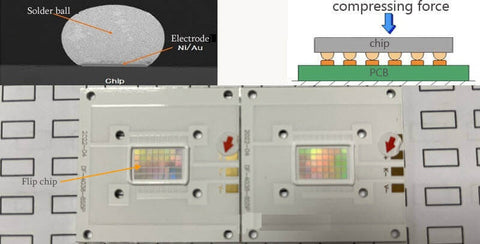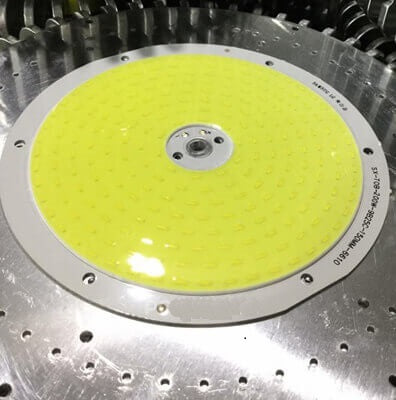Flip-chip bonding is similar to surface mount (SMT). And the IC is interconnected to the ceramic PCB with thermosetting solder paste. But the solder paste is electroplated at the bottom of the IC and becomes solder balls after reflow. Then the IC is picked and placed on the PCB. Under a compressing force, at about 300℃, the solder balls melt and cure to interconnect the IC and the PCB.
When we power on, the light sheds from the bottom of the IC and is reflected by a reflective film.
When the ICs are bonded on the ceramic PCB, whether by wire bonding or flip-chip bonding, we have to seal them up with a protective glue layer. The glue color is custom according to your product's lighting specification requirements.

